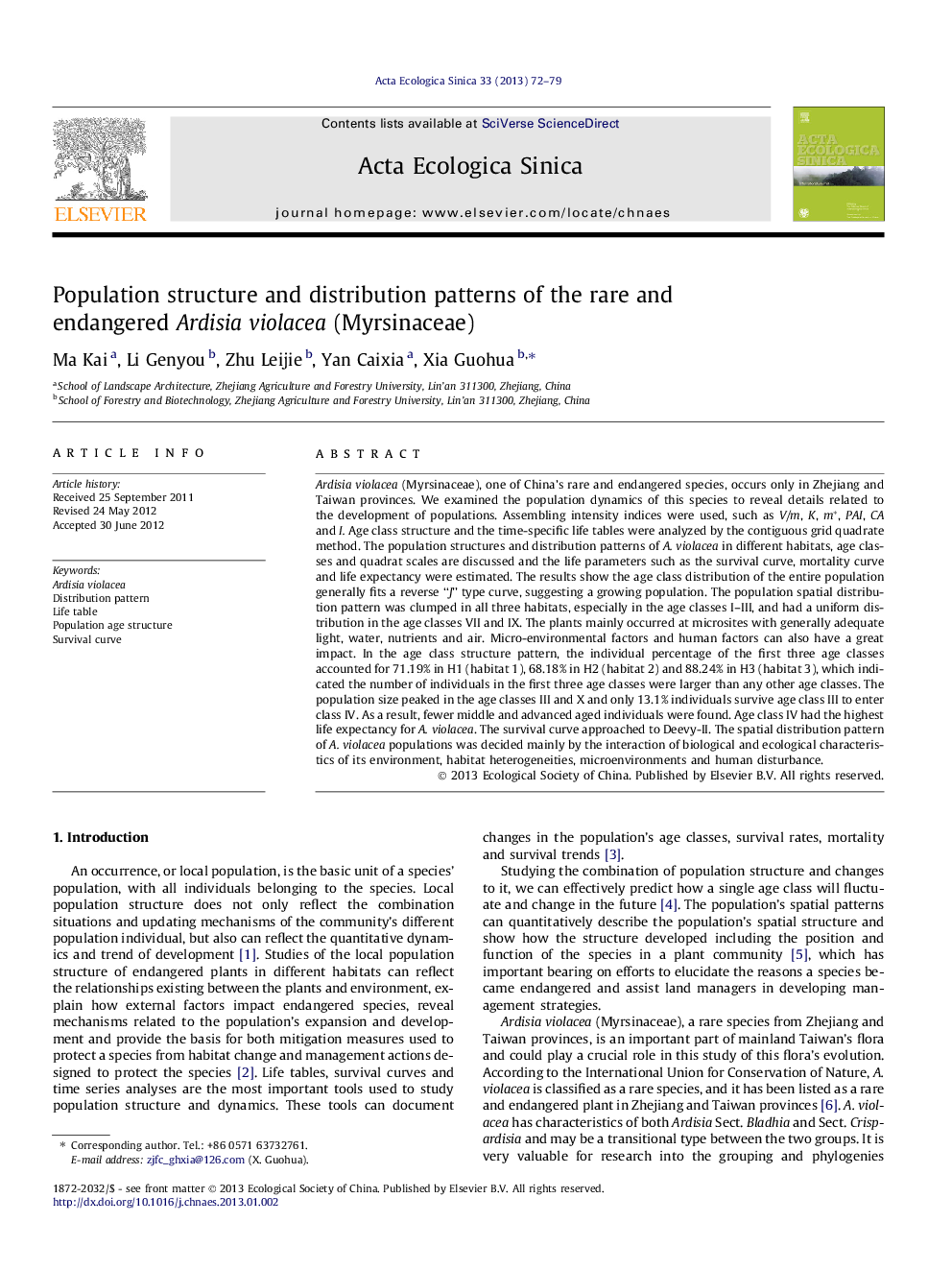| کد مقاله | کد نشریه | سال انتشار | مقاله انگلیسی | نسخه تمام متن |
|---|---|---|---|---|
| 4379893 | 1303948 | 2013 | 8 صفحه PDF | دانلود رایگان |
عنوان انگلیسی مقاله ISI
Population structure and distribution patterns of the rare and endangered Ardisia violacea (Myrsinaceae)
دانلود مقاله + سفارش ترجمه
دانلود مقاله ISI انگلیسی
رایگان برای ایرانیان
کلمات کلیدی
موضوعات مرتبط
علوم زیستی و بیوفناوری
علوم کشاورزی و بیولوژیک
بوم شناسی، تکامل، رفتار و سامانه شناسی
پیش نمایش صفحه اول مقاله

چکیده انگلیسی
Ardisia violacea (Myrsinaceae), one of China's rare and endangered species, occurs only in Zhejiang and Taiwan provinces. We examined the population dynamics of this species to reveal details related to the development of populations. Assembling intensity indices were used, such as V/m, K, m*, PAI, CA and I. Age class structure and the time-specific life tables were analyzed by the contiguous grid quadrate method. The population structures and distribution patterns of A. violacea in different habitats, age classes and quadrat scales are discussed and the life parameters such as the survival curve, mortality curve and life expectancy were estimated. The results show the age class distribution of the entire population generally fits a reverse “J” type curve, suggesting a growing population. The population spatial distribution pattern was clumped in all three habitats, especially in the age classes I-III, and had a uniform distribution in the age classes VII and IX. The plants mainly occurred at microsites with generally adequate light, water, nutrients and air. Micro-environmental factors and human factors can also have a great impact. In the age class structure pattern, the individual percentage of the first three age classes accounted for 71.19% in H1 (habitat 1), 68.18% in H2 (habitat 2) and 88.24% in H3 (habitat 3), which indicated the number of individuals in the first three age classes were larger than any other age classes. The population size peaked in the age classes III and X and only 13.1% individuals survive age class III to enter class IV. As a result, fewer middle and advanced aged individuals were found. Age class IV had the highest life expectancy for A. violacea. The survival curve approached to Deevy-II. The spatial distribution pattern of A. violacea populations was decided mainly by the interaction of biological and ecological characteristics of its environment, habitat heterogeneities, microenvironments and human disturbance.
ناشر
Database: Elsevier - ScienceDirect (ساینس دایرکت)
Journal: Acta Ecologica Sinica - Volume 33, Issue 2, April 2013, Pages 72-79
Journal: Acta Ecologica Sinica - Volume 33, Issue 2, April 2013, Pages 72-79
نویسندگان
Ma Kai, Li Genyou, Zhu Leijie, Yan Caixia, Xia Guohua,